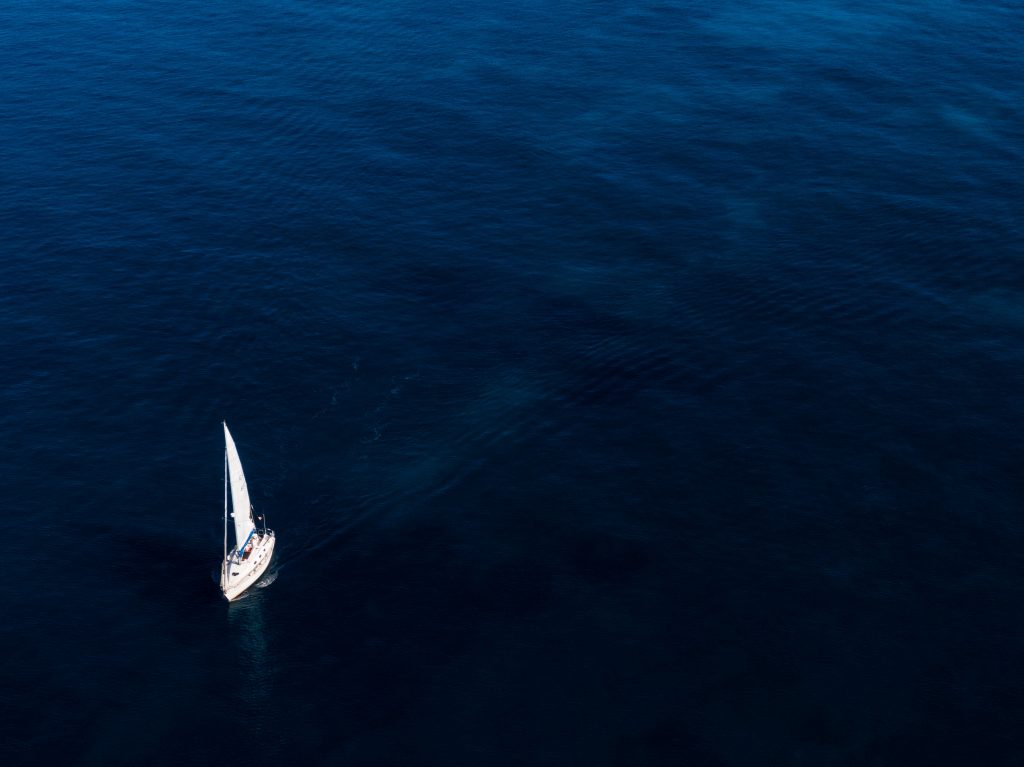
Sailing is one of the most exhilarating and rewarding ways to experience the open water. Whether you’re drawn to the peacefulness of gliding across the sea or the adrenaline rush of racing, sailing offers something for everyone. However, getting started can be daunting for beginners due to the technical aspects and various skills required. This guide will take you through everything you need to know to embark on your sailing journey with confidence.



1. Understanding the Basics of Sailing
Terminology You Should Know
Before setting sail, it’s essential to familiarize yourself with basic sailing terminology:
- Bow: The front of the boat.
- Stern: The back of the boat.
- Port: The left side when facing forward.
- Starboard: The right side when facing forward.
- Boom: The horizontal pole attached to the bottom of the sail.
- Mast: The tall vertical pole that supports the sails.
- Jib: The smaller sail in front of the mast.
- Mainsail: The large sail behind the mast.
- Tacking and Jibing: Maneuvers used to change direction relative to the wind.
How a Sailboat Works
A sailboat moves by harnessing the wind. The sails catch the wind, creating forward motion. Depending on the wind’s direction, you may need to adjust the sails to optimize speed and control. The key principles of sailing include:
- Lift and Drag: The wind flowing over the sail generates lift, similar to how an airplane wing works.
- Point of Sail: The boat’s direction relative to the wind (e.g., upwind, downwind, beam reach).
- Heel: The tilt of the boat caused by wind pressure.
2. Essential Sailing Skills for Beginners
How to Rig a Sailboat
Rigging involves setting up the sails, mast, and other components before setting off. Steps include:
- Attaching the mainsail to the mast and boom.
- Raising the jib (if applicable) and ensuring all lines are properly secured.
- Checking all ropes, pulleys, and safety gear.
How to Steer and Navigate
Steering a sailboat requires understanding how the rudder and sails work together:
- Use the Tiller or Wheel: Move the tiller in the opposite direction you want to go (or turn the wheel in the desired direction).
- Adjust Sails Accordingly: If turning upwind, tighten the sails; if heading downwind, loosen them.
- Maintain a Steady Course: Constant adjustments help keep the boat balanced and efficient.
How to Tack and Jibe
- Tacking: Turning the bow through the wind to change direction (used when sailing upwind).
- Jibing: Turning the stern through the wind (used when sailing downwind, requires caution due to the boom swinging across).
3. Essential Equipment and Safety Gear
Must-Have Sailing Equipment
- Life Jackets: Essential for safety, even for strong swimmers.
- Navigation Tools: GPS, compass, and nautical charts.
- Ropes and Lines: Used to control sails and secure the boat.
- Anchor: Keeps the boat in place when needed.
- VHF Radio: Important for communication in case of emergencies.
- First Aid Kit: For treating minor injuries onboard.
- Sailing Gloves: Protect your hands from rope burns.
Safety Tips for New Sailors
- Check the Weather: Always be aware of wind and storm forecasts.
- Wear Proper Clothing: Quick-drying clothes, waterproof layers, and non-slip shoes.
- Learn Capsizing Recovery: Know how to right the boat if it tips over.
- Stay Hydrated: The sun and sea can dehydrate you quickly.
- Know the Rules: Follow right-of-way rules and maritime laws.
4. Best Ways to Learn Sailing
Take a Sailing Course
Many organizations, such as the American Sailing Association (ASA) or the Royal Yachting Association (RYA), offer beginner courses covering:
- Basic sailing techniques
- Safety procedures
- Navigation and seamanship
Practice on a Small Boat
Starting on a dinghy or small sailboat is ideal for beginners as they are easier to maneuver and provide direct feedback on wind and sail adjustments.
Join a Sailing Club
Sailing clubs provide access to boats, experienced sailors, and opportunities to participate in races or group outings.
Sail with Experienced Sailors
Learning from seasoned sailors helps build confidence and skills quickly. Many sailing communities welcome beginners looking to crew on larger boats.
5. Common Mistakes and How to Avoid Them
Oversteering
New sailors often make large, abrupt turns. Make small, gradual adjustments to maintain control.
Ignoring the Wind Direction
Always be aware of wind changes and adjust your sails accordingly.
Not Checking the Weather
Sudden weather changes can be dangerous. Always check forecasts before heading out.
Neglecting Safety Precautions
Wearing a life jacket, knowing emergency procedures, and having safety gear onboard are non-negotiable.
Forgetting to Balance the Boat
Weight distribution is crucial for stability. Keep the crew and gear evenly spread.
6. Advancing Your Sailing Skills
Once you master the basics, you can explore more advanced sailing techniques such as:
- Racing: Competing in regattas to hone your skills under pressure.
- Long-Distance Cruising: Planning extended voyages across open waters.
- Navigation Mastery: Learning celestial and electronic navigation methods.
- Heavy Weather Sailing: Handling strong winds and rough seas confidently.
Conclusion
Sailing is an incredible skill that opens up a world of adventure, freedom, and connection with nature. While it may seem overwhelming at first, taking the time to learn the fundamentals, practice regularly, and respect the sea will set you on a path to becoming a confident sailor. Whether you dream of weekend sails, competitive racing, or crossing oceans, the journey starts with taking that first step onto a boat.
Now it’s your turn—grab your life jacket, find a sailing school, and set sail on your new adventure!
